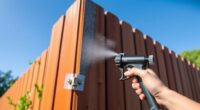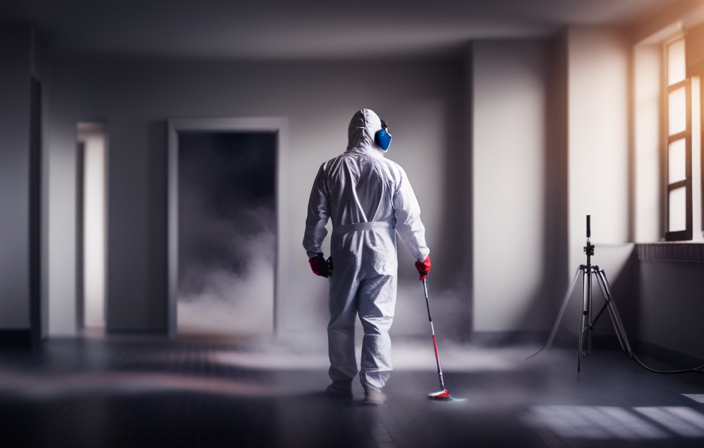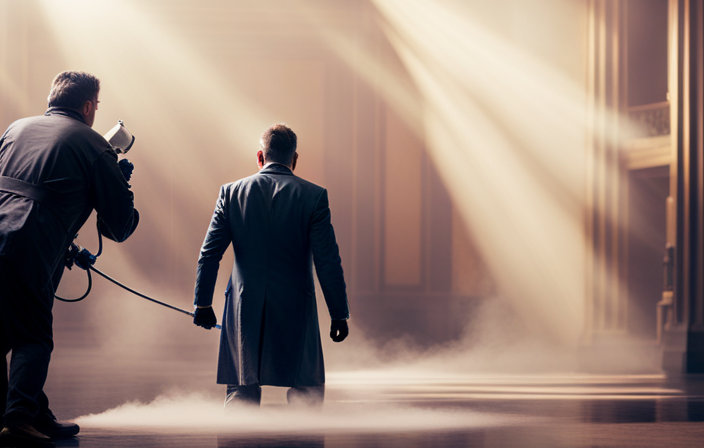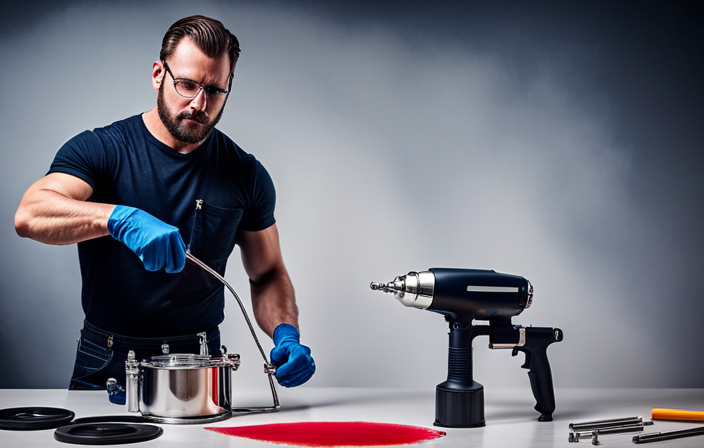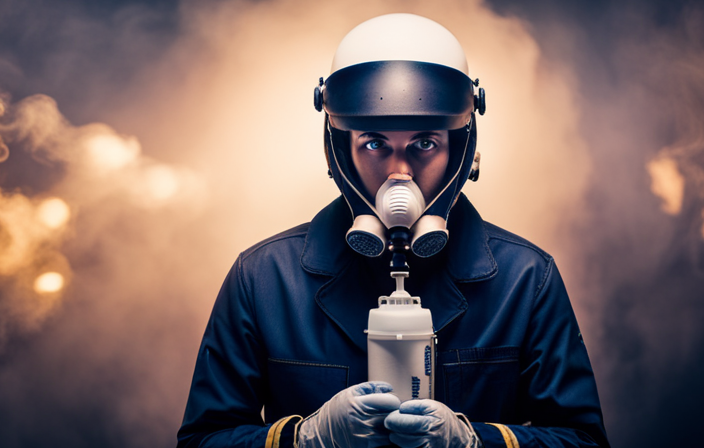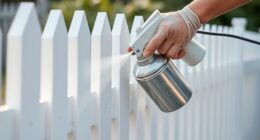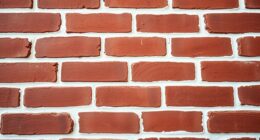Yes, you can spray stain or lacquer with an airless sprayer, and it often results in a smooth, professional finish. Just make sure to choose the right sprayer, nozzle, and pressure settings for each product. Proper surface preparation and environmental conditions are also essential for best results. Keep in mind, adjusting your technique and maintaining your equipment will make the process easier and more effective. If you want to learn some expert tips, there’s more to discover below.
Key Takeaways
- Yes, airless sprayers can be used to apply both stain and lacquer effectively.
- Use appropriate nozzle sizes (e.g., 211/213 for stain, 517/619 for lacquer) for best results.
- Adjust pressure settings to accommodate the viscosity of stain or lacquer, ensuring proper atomization.
- Proper surface preparation and environment control are essential for smooth, even finishes.
- Regular cleaning and maintenance of equipment prevent clogging and ensure consistent spray quality.
Understanding the Differences Between Stain, Lacquer, and Other Finishes

Have you ever wondered what sets stain, lacquer, and other finishes apart? The key differences lie in their composition and how they’re applied. Stain penetrates the wood, highlighting its natural grain, and requires specific brush techniques to guarantee even coverage. Lacquer, on the other hand, forms a hard, protective film that dries quickly, offering a glossy appearance and high finish durability. Other finishes, like polyurethane or varnish, provide different levels of protection and sheen. Knowing these distinctions helps you choose the right approach for your project. Proper brush techniques are essential to achieving a smooth, consistent coat, especially with finishes that demand precision. Understanding each finish’s unique properties ensures you’ll get the desired look and longevity from your work. Additionally, selecting the right application method, such as spray or brush, can significantly impact the final finish, especially when working with finishes like lacquer that are compatible with airless spray equipment.
Choosing the Right Airless Sprayer and Nozzle for Staining and Lacquering
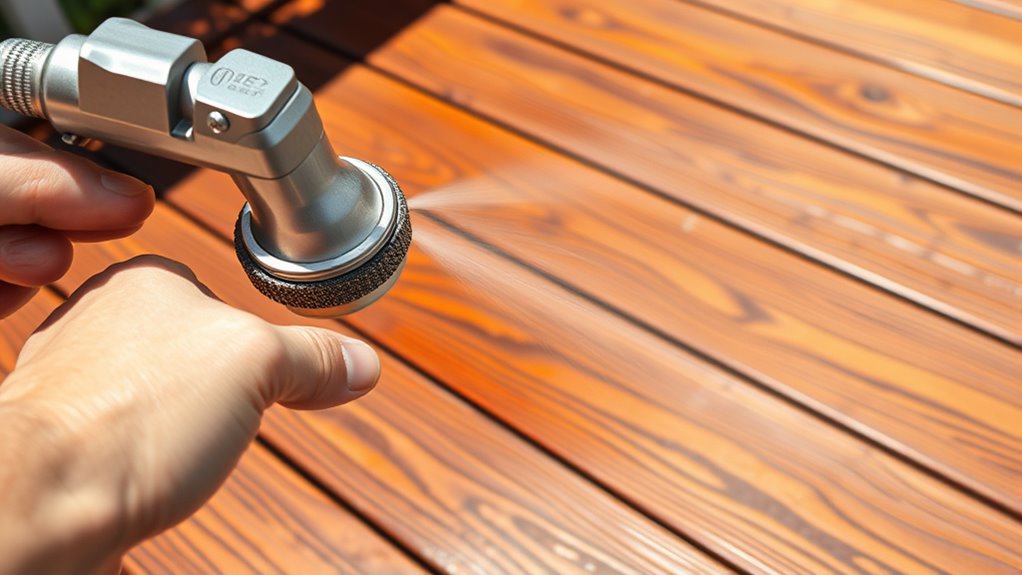
Choosing the right airless sprayer and nozzle is vital for achieving a smooth, even finish when staining or lacquering. Select a sprayer with adjustable pressure settings to control the flow and prevent overspray. For staining, opt for a sprayer that handles thicker materials and allows for fine control. Nozzle selection is important; a smaller tip (around 211 or 213) provides detail work, while a larger tip (around 517 or 619) covers broad surfaces efficiently. Proper sprayer maintenance ensures consistent performance and prolongs equipment life. Clean your sprayer and nozzles thoroughly after each use to prevent clogging. By choosing the right equipment and maintaining it well, you’ll achieve professional results with minimal effort and waste.
Preparing Your Surface and Environment for Optimal Spray Results
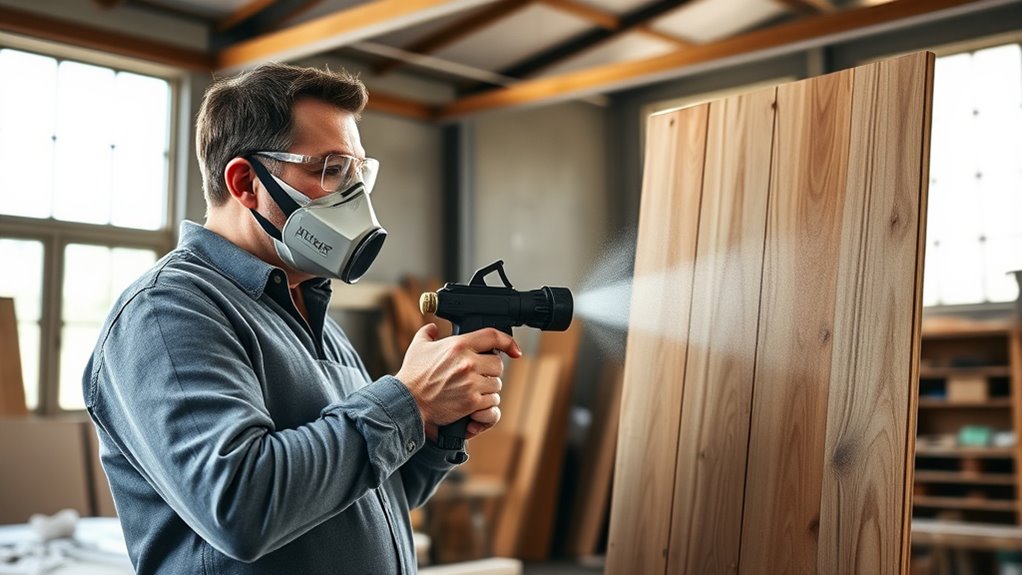
To achieve the best spray results, start by thoroughly preparing your surface and environment. Proper surface preparation ensures the stain or lacquer adheres well and provides a smooth finish. This includes cleaning, sanding, and removing any dust, grease, or old finishes. Skipping these steps can lead to uneven coverage or defects. Additionally, consider environmental conditions; ideal temperatures typically range from 50°F to 85°F, with low humidity to prevent runs and drying issues. Avoid spraying in direct sunlight or windy conditions, which can cause overspray and uneven application. Controlling your environment and preparing your surface properly creates ideal conditions for spray application, resulting in a professional-looking finish with minimal touch-ups. Being mindful of emotional support can also help manage stress and frustration during this process.
Tips for Achieving a Smooth and Even Finish When Using an Airless Sprayer
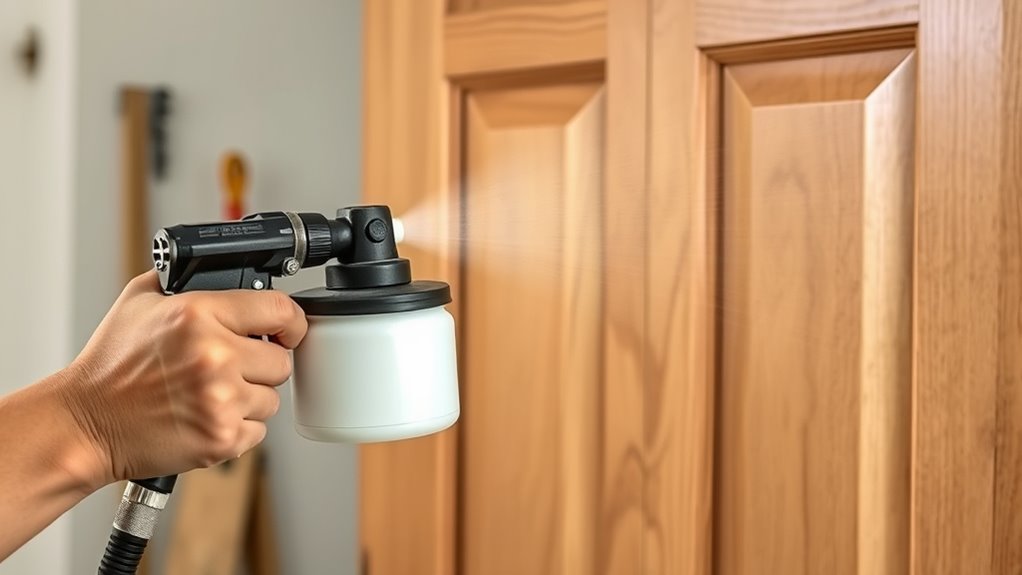
Achieving a smooth and even finish with an airless sprayer requires careful technique and attention to detail. To do this, focus on controlling your spray pattern and applying consistent brush techniques. First, always keep the spray gun perpendicular to the surface and maintain a steady distance. Second, overlap each pass by about 50% to avoid streaks. Third, adjust your spray pattern to ensure even coverage, avoiding thick coats that can cause drips or uneven textures. Practice your brush techniques to smooth out any uneven spots, especially around edges or corners. Consistent motion and proper equipment setup are key. Additionally, understanding proper maintenance of your sprayer can prevent issues like clogging and ensure optimal performance. With these tips, you’ll produce a professional, flawless finish every time.
Troubleshooting Common Issues and Ensuring Proper Cleanup
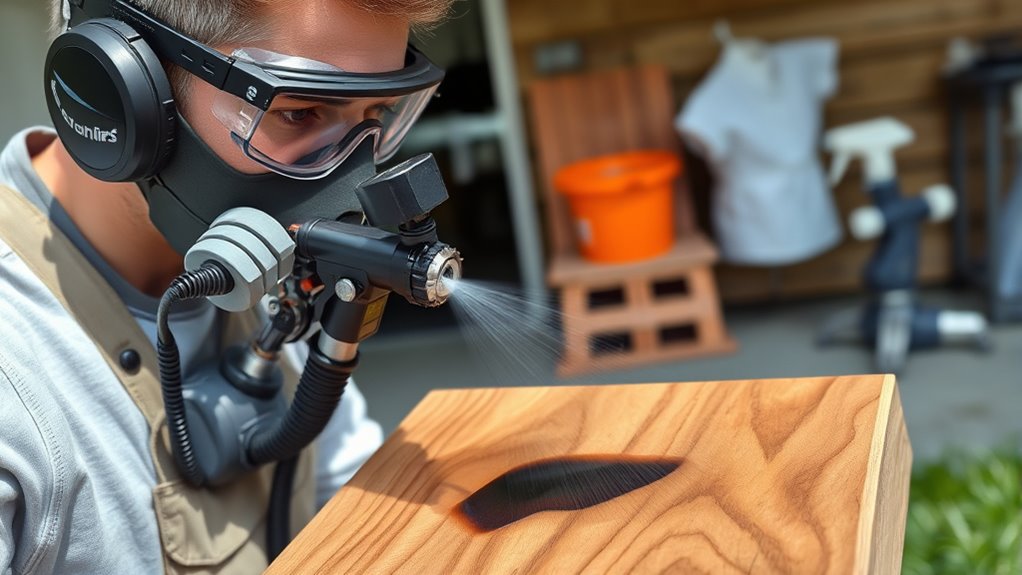
When you notice issues like uneven spray, drips, or clogging, addressing them promptly can save time and improve your finish. First, check your spray technique; maintaining consistent distance and steady motion helps prevent these problems. For clogs, stop spraying, turn off the equipment, and clean the nozzle and filter thoroughly. Regular equipment maintenance, including flushing the system after each use, keeps your sprayer functioning smoothly. If you encounter uneven spray, inspect the pressure settings and ensure the tip size is appropriate for your material. Always clean your sprayer according to manufacturer instructions, using the right cleaning solutions. Proper cleanup not only prolongs your equipment’s life but also guarantees consistent performance on your next project. Additionally, understanding frictional unemployment can provide insights into managing workforce challenges during equipment upgrades or operational changes. Troubleshooting and maintenance are key to achieving professional results.
Frequently Asked Questions
Can I Spray Stain or Lacquer on Outdoor Furniture With an Airless Sprayer?
Yes, you can spray stain or lacquer on outdoor furniture with an airless sprayer. It’s efficient and provides a smooth finish. Use proper brush techniques to blend edges and avoid drips. Keep in mind, spraying can reduce drying times compared to brushing, but verify you apply thin coats to prevent runs. Always test on a small area first to achieve the best results and a professional look.
How Do I Adjust the Pressure for Spraying Different Types of Stain or Lacquer?
You need to perform pressure adjustment based on the type of stain or lacquer you’re spraying. Start by setting the pressure lower for thinner products and increase it for thicker ones. Use the spray tip to control the spray pattern and flow. Adjust the pressure dial on your airless sprayer gradually, testing on a scrap surface until you find the right balance. Proper pressure adjustment guarantees even coverage and prevents runs or overspray.
Is It Safe to Spray Stain or Lacquer Indoors Using an Airless Sprayer?
Spraying stain or lacquer indoors is a risky business—you’re playing with fire if you don’t take precautions. Good ventilation is a must; open windows and use fans to keep air circulating. You’ll want to prioritize air quality, so consider using masks and respirators. If you’re unsure, it’s best to do it outdoors or in a well-ventilated space to avoid health hazards and ensure safety.
What Safety Gear Should I Wear When Spraying Stain or Lacquer?
When spraying stain or lacquer, you should wear protective clothing to shield your skin from fumes and splatters. A respirator mask is essential to safeguard your lungs from harmful vapors and airborne particles. Always guarantee your safety gear fits properly, and work in a well-ventilated area. By taking these precautions, you minimize health risks and make your spraying project safer and more effective.
How Do I Prevent Overspray and Runoff When Using an Airless Sprayer?
You might think overspray and runoff are unavoidable, but with proper spray technique and nozzle selection, you can reduce them considerably. Start by maintaining a consistent distance from the surface, moving your sprayer smoothly. Choose the right nozzle size for the stain or lacquer, and adjust pressure accordingly. Practice on a scrap piece first, ensuring even coats and minimizing waste, so your project stays clean and efficient.
Conclusion
Using an airless sprayer for staining or lacquering can save you time and deliver a professional finish. Just remember to select the right nozzle, prepare your surface properly, and practice good technique. Did you know that airless sprayers can apply finishes up to 50% faster than brushing? With the right approach, you’ll achieve smooth, even results every time—making your project both efficient and impressive.

